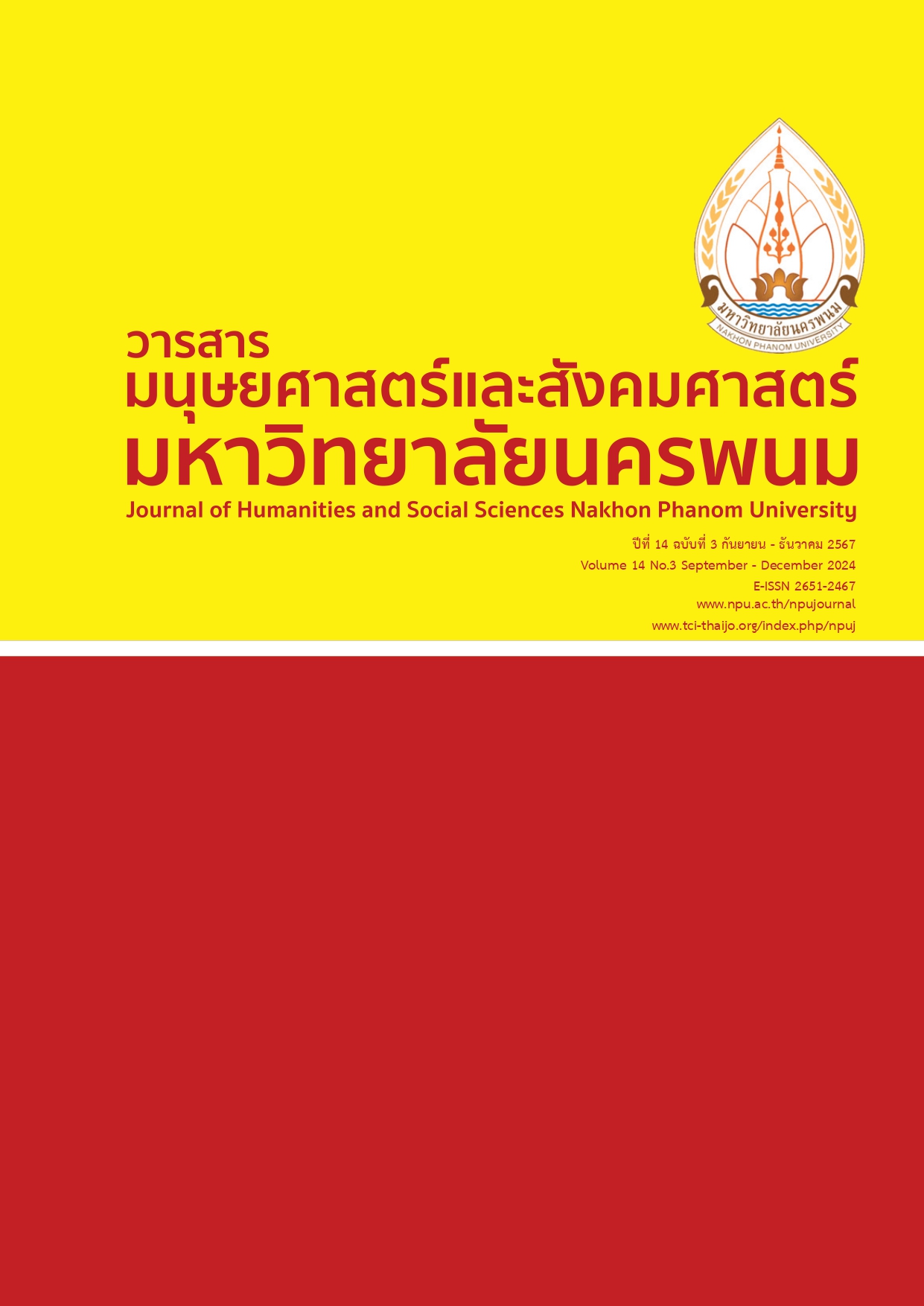Exploring the Online Social Media Landscape on Electronic Cigarettes to Set Communication Guideline Promoting Sustainable Development Goal 3: Good Health and Well-being
Main Article Content
Abstract
This research aims to examine the volume of information related to e-cigarettes across various social media platforms, types of communicators, and issues related to e-cigarette on social media platforms. This study used computational social science methodologies.The research population consisted of ecigarette information that was searched through social listening tools, including Google Trends, Mandala Analytics, and Web scraping techniques. The data was collected using the keyword "e-cigarette" (in Thai) to search across social media platforms, including Facebook, X, community blogs, e-commerce websites, and other relevant websites. The data analysis was performed using content analysis technique. The research findings revealed that 1) the highest search volume of communication regarding e-cigarettes across all social media platforms in 2022, amounting to 100 relative search units. 2) The amount of e-cigarette communicators in terms of sellers of e-cigarettes was higher than the campaigners and news outlets. 3) The content related to e-cigarettes on social media can be categorized into information concerning the demand for e-cigarette use and information about legal regulations associated with e-cigarette consumption. The research results can help organizations that promoting e-cigarette awareness understand the context and provide a foundation for communication, policy setting, and communication guideline for enhancing sustainable development goal 3: Good health and well-being
Article Details

This work is licensed under a Creative Commons Attribution-NonCommercial-NoDerivatives 4.0 International License.
References
Akharawirawat, T. & Banchonhattakit, P. (2022). Health Communication for Health Promotion in Community. Journal of Phrae Public Health for Development (JPPHD), 2(1),78-89.
Chacon, L., Mitchell, G. & Golder, S. (2024).The commercial promotion of electronic cigarettes on social media and its influence on positive perceptions of vaping and vaping behaviours in Anglophone countries:A scoping review.PLOS Global Public Health, 4(1),e0002736. doi:org/10.1371/journal.pgph. 0002736
Chen, J. & Wang, Y. (2021). Social media use for health purposes: systematic review. Journal of medical Internet research, 23(5),e17917. doi:10.2196/17917
Clendennen, S. L., Loukas, A., Vandewater, E. A., Perry, C. L. & Wilkinson, A. V. (2020). Exposure and engagement with tobacco-related social media and associations with subsequent tobacco use among young adults: A longitudinal analysis. Drug & Alcohol Dependence, 213,108072.doi:org/10. 1016/j.drugalcdep.2020.108072.
Ducange, P., Fazzolari, M., Petrocchi, M. & Vecchio, M. (2019). An effective decision support system for social media listening based on cross-source sentiment analysis models.Engineering Applications of Artificial Intelligence, 78(2019),71-85. doi:10.1016/j.engappai.2018.10.014
Goicoechea, J. Z., Boughner, A., Lee, J. J. C., Mahajan, A., Yeo, K., Sproga, M. & Polosa, R. (2024). A global health survey of people who vape but never smoked: protocol for the VERITAS (Vaping Effects: Real-World International Surveillance) Study. JMIR Research Protocols.13(1),e54236.doi:10.2196 /54236
Grønmo, S. (2019). Social research methods: Qualitative, Quantitative and Mixed Methods Approaches. America : SAGE Publications.
Hfocus. (2024). TRC reveals severe e-cigarette epidemic among children! research shows 66.7% buy from online stores. Retrieved June 2024, from https://www.hfocus.org/content/2024/03/30074
Lyu, J. C., Huang, P., Jiang, N. & Ling, P. M. (2022). A systematic review of e-cigarette marketing communication: messages, communication channels, and strategies. International Journal of Environmental Research and Public Health, 19(15),9263. doi:org/10.3390/ijerph19159263.
Kaewthet, T. (2022).Creating Content on New Media Landscape in The Digital Age. Lampang Rajabhat University Journal, 11(2),92-102.
Kong G., Kuguru E. K., Bhatti H., Sen, I. & Morean E.M. (2021). Marketing Content on E-Cigarette Brand-Sponsored Facebook Profile Pages. Subst Use Misuse, 56(4),442-448. doi:10.1080/10826084.2021. 1878223
Kotler, P. & Keller K. L. (2016). Marketing management (15th ed.). Harlow : Pearson Education Limited.
Lee, S., Elam, K., Lohrmann, D., Luo, J., Chow, A. & Seo, D. C. (2024). Prospective longitudinal relations among frequent social media use, nicotine vaping and experiencing internalizing mental health problems. Addiction. 119(10),1751-1761. doi:10.1111/add.16601
Lohapiratana, K. (2022). 9 Social Listening Tools with Powerful Features – Both Free and Paid [Full Review!!]. Retrieved October 2024, from https://contentshifu.com/blog/review-social-listening-tools
Loysmut, S. (2020). Government as Enemy: A Discourse Analysis Approach in Social Media and Newspaper Articles Regarding E-Cigarette Control. Public Health Policy and Laws Journal, 6(1),201-201.
Maneekun, C. (2023). Factors related to early electric smoking stage among upper secondary school students in chachoengsao province. Retrieved October 2024, from https://ir.buu.ac.th/dspace /bitstream/1513/841/1/63910211.pdf
National Statistical Office Thailand. (2021). Health Behavior of Population Survey. Retrieved June 2024, from https://www.nso.go.th/nsoweb/nso/survey_detail/w6
Rohde, J. A., Noar, S. M., Mendel, J. R., Hall, M. G., Baig, S. A., Ribisl, K. M. & Brewer, N. T. (2020). E-Cigarette health harm awareness and discouragement: implications for health communication. Nicotine and Tobacco Research. 22(7),1131-1138. doi:10.1093/ntr/ntz194.
Singh, T., Agaku, I. T., Arrazola, R. A., Marynak, K. L., Neff, L. J., Rolle, I. T. & King, B. A. (2016). Exposure to advertisements and electronic cigarette use among US middle and high school students. Pediatrics, 137(5),1-9. doI:10.1542/peds.2015-4155.
Simon K. (2023). Digital 2023: Thailand (The state of digital in Thailand in 2023). Retrieved June 2024, from https://datareportal.com/reports/digital-2023-thailand.
Sloan, L., & Quan-Haase, A. (2022). The SAGE handbook of social media research methods. London : Sage Publications Ltd.
The Coverage. (2023). HSS reveals e-cigarette smoking rates among 'youth' in 6 health regions higher than national level, 92%influenced by friends. Retrieved July 2024, from https://www.thecoverage. info/news/content/5099
Vogel, E. A., Ramo, D. E., Rubinstein, M. L., Delucchi, K. L., Darrow, S. M., Costello, C. & Prochaska, J. J. (2021). Effects of social media on adolescents’ willingness and intention to use e-cigarettes: An experimen tal investigation. Nicotine & Tobacco Research, 23(4),694–701. doi:10.1093/ntr/ntaa003
Yang, Q. (2024). Understanding the associations between adolescents’ exposure to e-cigarette information and vaping behavior through the theory of planned behavior. Health Communication, 39(4),641-651. doi:10.1080/10410236.2023.2179715
Yavuz, Ş. & Tire, E. (2023). A survey of corporate communication professionals' perspective on social listening and analytics. Corporate Communications: An International Journal, 28(4),564-581.doi:10.1108 /CCIJ-03-2022-0036
Zhang, L., Ao, S. H., Ye, J. F. & Zhao, X. (2024). How does health communication on social media influence e-cigarette perception and use? A trend analysis from 2017 to 2020. Addictive Behaviors, 149,107875. doi:10.1016/j.addbeh.2023.107875


